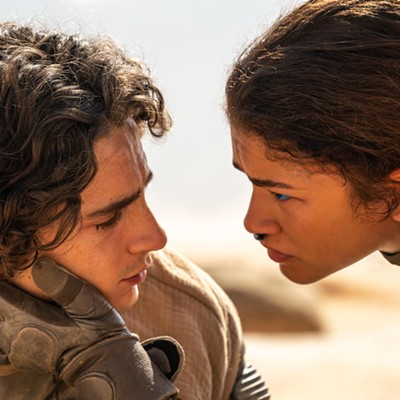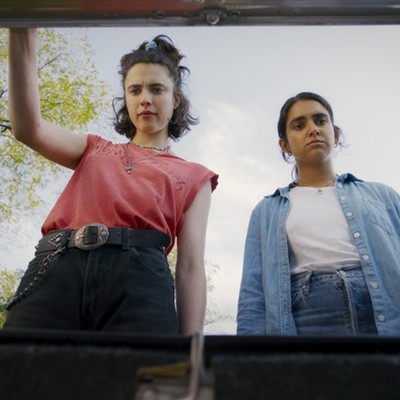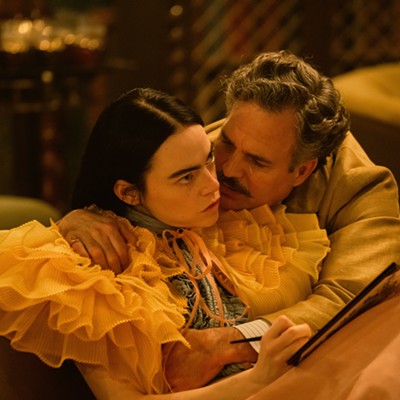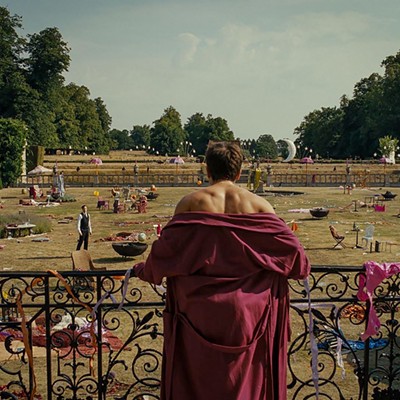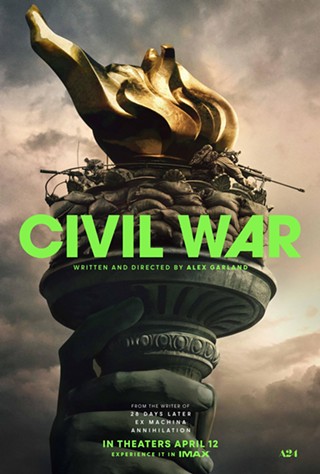This is exceptionally odd when you consider that not only is Ms. Witherspoon America's 14th most beloved screen personality; she is also the quintessential Becky Sharp, social climbing heroine of the Thackery novel. Thus, she is perfect in the role, or as Becky Sharp would say, the "róle."
Unless you missed the last seven film adaptations, the three miniseries and the critically lauded Classic Comics version, (not to mention the so-called "book" by William Makepeace Thackery himself), you probably know that Vanity Fair is a vastly complex tale of early 19th-century England.
Following young Becky Sharp from her impoverished childhood through her many thwarted attempts to be accepted by the unpleasant shrews of high society, Thackery aimed his novel at the social institutions that crippled the British underclasses and made the rich people such prigs that Monty Python was spawned by an almost-mathematical need to make fun of them.
Thackery wanted to say a lot, and, in the style of the times, he included dozens of characters, five major plot lines and a kangaroo that steals a briefcase full of money and makes off into the Australian Outback.
Filming a novel of this complexity is the sort of task that makes ordinary Hollywood filmmakers blanche with the kind of terror that drives them to support liberal causes and go to Kabala centers and do it with three or four aspiring actress at a time. Here's a very brief summary of what must go into the plot of this film: two attempts at illicit seduction, four marriages, two births, nine changes of location, bodices, the Napoleonic wars, India, three more bodices, an elderly spinster who holds the family fortune, love, betrayal, death, more death, more betrayal, a little more love, three attempts to enter high society, three bankruptcies, the king of England, and, finally, another bodice and the forcible ripping of said bodice while it hides a bosom which not only attempts to, but actually succeeds at, heaving.
Even Stanley Kubrick said that Vanity Fair was unfilmable, and most physicists, film critics and theologians agree that Kubrick was, in fact, God. So it's a bit of a surprise that Mira Nair (best known in America for Monsoon Wedding and Kama Sutra) did such a good job with it.
She had a lot of help from Witherspoon and her co-stars, notably Gabriel Byrne, Rhys Ifans, Jonathan Rhys Myers, James Purefoy, Jim Broadbent, Bob Hoskins, Romola Garai and every other English actor who wasn't busy filming Bridget Jones 2: Knickers So Bloody Big That You Could Practically Pull Them Over Your Bleedin' Head.
Strangely, she didn't get a lot of help from cinematographer Declan Quinn. Though there are dozens of beautiful shots in the film, and the rich palette would make a Las Vegas drag revue look positively hetero, there's also an oddly amateur quality to the filming. Characters duck in and out of frame; compositions are often painfully symmetrical; and most of the story-telling shots seem to have been drawn from the Filming for the Simpleminded textbook (McGraw Hill, 1967).
What really worked for me, though, was the script, which I thought was hilarious. Based on the responses of those around me, I was pretty much alone in thinking this. However, if you like your jokes drier than a mummified virgin, and you think that the circumlocutions of the uptight English can be raised to the ridiculous, then you might get a kick out of the rich merchant describing a wealthy non-white woman as having "a shade or two of tawny."
Or maybe you'll just enjoy the costuming. Director Nair is the first Indian woman to do Vanity Fair, and she plays up the British Imperial angle by including the peacock-like finery that was in vogue in England in the age of the Raj. While every generation interprets the costumes in costume dramas in light of the fashions of their own times, Nair has, by going far-Eastern, interpreted them in light of the fashions of the early 1970s. It's like watching a bunch of really uptight, really wealthy hippies spouting precisely worded insults at each other for two hours and 17 minutes.
Which I think will be this film's biggest commercial liability. (It was a poor No. 8 at the box office its opening week.) Nair has captured Thackery as well as anyone since Kubrick (whose Barry Lyndon bored and delighted enough people to now be considered a classic), but she asks a lot of her audience. Great performances only go so far when the dialogue dips into the unforgivingly high-brow, and there aren't many American asses that enjoy two-plus hours on the sticky seats of the mall multiplex.

